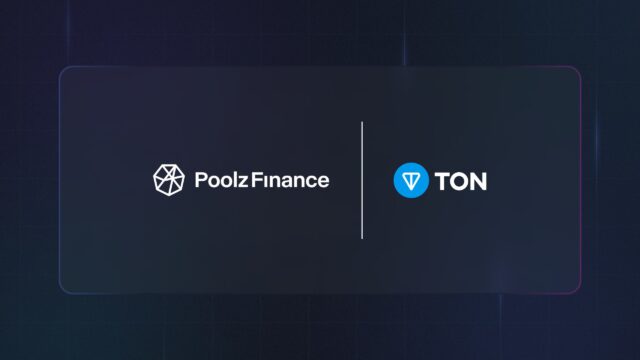Forget the internet as we know it, and imagine a new form of internet that understands you. One where every piece of content available is tailored to your needs and interests. In the near future, the internet will undergo a significant change. Name of this new technology? Web 3.0.
Web 3.0 is an idea for a new version of the internet that uses concepts like decentralization, blockchain technology, and an economy based on digital tokens.
Thanks to Web 3.0 Websites, we can choose to share the information with companies. People will have more control over their data than ever, they will be able to enjoy a personalized browsing experience with online apps adapted to their needs and preferences based on our location, device, and accessibility requirements.
History of the Web
Ever since it was created, most people think of the internet as a constant part of modern life. But the internet most of us know today is very different from what people thought it would be.
To help you understand this better, let’s divide the short history of the internet into two loose periods: Web 1.0 and Web 2.0.
Web 1.0: Read-Only
Created between 1990 and 2004 by Tim Berners-Lee, Web 1.0 was mostly made up of static websites owned by companies. Also known as Syntactic Web or Read-Only Web, it allows users to read the content provided by creators with no way to get information back to the people who created it. There was almost no interaction between users, and people rarely made content, so it was called the “Read-Only web.”
Web 2.0: Read-Write
In 2004, social media platforms emerged, and the Web 2.0 era began. This period is known as the “Social Web” or “Read-Write web” because it allows users to connect via websites. Every user is a content creator, and content is shared and spread around the web.
Some well-known Web 2.0 services include Facebook, YouTube, Flickr, Twitter, etc. Users are at the center of Web 2.0, so producers only need to figure out how to make it easier for them to participate. But as more and more people went online, a small number of big companies started to control a lot of the traffic (especially in all the information that users create) and money made on the Web.
Web 3.0: Read-Write-Own
Also known as Semantic or Read-Write-Own web, Web 3.0 describes the web’s future. Using Artificial Machine learning, computers can now receive information similar to humans. This assists in intelligently developing and distributing helpful material based on a user’s specific requirements.
Gavin Wood, one of the people who helped start Ethereum in 2014, came up with the idea of “Web 3.0.” Gavin put into words a solution to a problem that many early crypto adopters had: the internet required too much trust.
That is, most of the internet that people seem to know and use today depends on a small number of trustworthy private companies.
Web 1.0 to Web 2.0 Transition
Web 1.0 to 2.0 was defined by the rise of social media and other aspects. User-generated content such as comments, database storage, and server-side scripting languages were all variables that shifted the Web from version 1 to 2.
Main Ideas Behind Web 3.0
When it comes to envisioning a better internet, Web 3.0 has become a catch-all term. It is fundamentally based on the idea of returning ownership to the people through the use of blockchains, cryptocurrencies, and NFTs.
- Decentralization is a key feature of Web3: Instead of enormous swaths of the internet controlled as well as owned by centralized companies, ownership is divided among its architects and users.
- Web3 requires no permissions: Anyone can engage in Web 3.0 equally; no one is left out.
- A native payment system available: Instead of depending on the outmoded infrastructure of banks and payment processors, Web 3.0 leverages cryptocurrencies for online transactions.
- Web 3.0 is a trustless system: Web 3.0 employs incentives and economic mechanisms instead of trusted third parties. That means, users can interact directly without going through any intermediary and don’t need any permission from a governing body.
Advantages of Web 3.0
- Web 3.0 is expected to be more trustworthy, providing manufacturers and consumers with greater overall flexibility. Its decentralized nature eliminates the potential of a single point of failure, providing a guarantee that consumers always retain control over their online data.
- Web 3.0 will provide a more customized browsing experience as it will recognize your preferences. You will only get relevant search results based on your interests, location, etc.
- Web 3.0 services are unaffected by outages. As a result of decentralization, users won’t have to be concerned about their accounts or services being suspended owing to technical issues or other factors.
Disadvantages of Web 3.0
- Regulating is a challenging task. Experts say decentralization could make monitoring and controlling the Web more difficult. Among other things, this could lead to a rise in cybercrime and online abuse.
- Existing website owners will have to upgrade. To avoid losing market share, incumbent companies will have to improve their digital services as Web 3.0 apps and websites become more popular.
- Personal and political data can now be accessed more easily. With Web 3.0, you’ll become part of a vast, interconnected network. This is a benefit of the neutral network, but it also makes it easy for anyone to get their hands on your public and private data.
Conclusion
Web3 is being hailed as the internet’s next-generation platform. Cryptocurrencies, NFTs, DAOs, and other decentralized finance forms are part of the new web’s blockchain-based concept. In this model, people have a financial stake and greater power over their web communities.
The Web3 ecosystem may still be very much in its infancy, but some of its ideas have already come to fruition. There has been a significant increase in bitcoin interest in the recent year, as well as advancements in layer 2 scaling solutions, major trials with new forms of governance, and revolutions in digital identity management.
Web 3.0 may be just getting started, but as we continue to build the infrastructure that will enable it, the future is bright.






